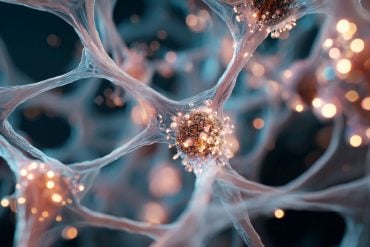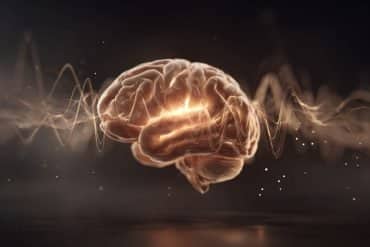Summary: Physical activity significantly reduces the risk of cardiovascular disease by diminishing stress-related brain signaling. The study, which analyzed data from over 50,000 participants, showed that individuals who adhered to physical activity guidelines had a 23% lower risk of developing heart disease.
Those with stress-related conditions like depression benefited the most, experiencing even greater cardiovascular improvements. This connection is largely attributed to physical activity’s ability to enhance the function of the prefrontal cortex, which helps regulate stress responses in the brain.
Key Facts:
- The study involved a comprehensive analysis of medical records, physical activity surveys, and brain imaging from 50,359 participants, showing a clear link between physical activity and reduced cardiovascular risk.
- Participants engaging in recommended levels of physical activity displayed reduced activity in brain regions associated with stress, which contributed to lowering their risk of heart disease.
- The benefits of physical activity were particularly pronounced in individuals with stress-related conditions such as depression, suggesting that exercise might be especially beneficial for this group.
Source: Mass General
New research indicates that physical activity lowers cardiovascular disease risk in part by reducing stress-related signaling in the brain.
In the study, which was led by investigators at Massachusetts General Hospital (MGH), a founding member of the Mass General Brigham healthcare system and published in the Journal of the American College of Cardiology, people with stress-related conditions such as depression experienced the most cardiovascular benefits from physical activity.

To assess the mechanisms underlying the psychological and cardiovascular disease benefits of physical activity, Ahmed Tawakol, MD, an investigator and cardiologist in the Cardiovascular Imaging Research Center at Massachusetts General Hospital, and his colleagues analyzed medical records and other information of 50,359 participants from the Mass General Brigham Biobank who completed a physical activity survey.
A subset of 774 participants also underwent brain imaging tests and measurements of stress-related brain activity.
Over a median follow-up of 10 years, 12.9% of participants developed cardiovascular disease. Participants who met physical activity recommendations had a 23% lower risk of developing cardiovascular disease compared with those not meeting these recommendations.
Individuals with higher levels of physical activity also tended to have lower stress-related brain activity. Notably, reductions in stress-associated brain activity were driven by gains in function in the prefrontal cortex, a part of the brain involved in executive function (i.e., decision making, impulse control) and is known to restrain stress centers of the brain. Analyses accounted for other lifestyle variables and risk factors for coronary disease.
Moreover, reductions in stress-related brain signaling partially accounted for physical activity’s cardiovascular benefit.
As an extension of this finding, the researchers found in a cohort of 50,359 participants that the cardiovascular benefit of exercise was substantially greater among participants who would be expected to have higher stress-related brain activity, such as those with pre-existing depression.
“Physical activity was roughly twice as effective in lowering cardiovascular disease risk among those with depression. Effects on the brain’s stress-related activity may explain this novel observation,” says Tawakol, who is the senior author of the study.
“Prospective studies are needed to identify potential mediators and to prove causality. In the meantime, clinicians could convey to patients that physical activity may have important brain effects, which may impart greater cardiovascular benefits among individuals with stress-related syndromes such as depression.”
Authorship:
Hadil Zureigat MD; Michael T. Osborne, MD; Shady Abohashem, MD; Kenechukwu Mezue, MD; Charbel Gharios, MD; Simran Grewal, DO; Alex Cardeiro; Nicki Naddaf; Giovanni Civieri, MD; Taimur Abbasi, MD; Azar Radfar, MD; Wesam Aldosoky, MD, Antonia V. Seligowski, PhD, Meagan M. Wasfy, MD; James Sawalla Guseh, MD; Timothy W. Churchill, MD; Rachel P. Rosovsky, MD; Zahi Fayad, PhD; Anthony Rosenzweig, MD; Aaron Baggish, MD; Roger K. Pitman, MD; Karmel W. Choi, PhD; Jordan Smoller, MD; and Lisa M. Shin, PhD.
Funding:
This work was supported by the National Institutes of Health.
About this exercise, stress, and cardiovascular disease research news
Author: Brandon Chase
Source: Mass General
Contact: Brandon Chase – Mass General
Image: The image is credited to Neuroscience News
Original Research: Open access.
“Effect of Stress-Related Neural Pathways on the Cardiovascular Benefit of Physical Activity” by Ahmed Tawakol et al. Journal of the American College of Cardiology
Abstract
Effect of Stress-Related Neural Pathways on the Cardiovascular Benefit of Physical Activity
Background
The mechanisms underlying the psychological and cardiovascular disease (CVD) benefits of physical activity (PA) are not fully understood.
Objectives
This study tested whether PA: 1) attenuates stress-related neural activity, which is known to potentiate CVD and for its role in anxiety/depression; 2) decreases CVD in part through this neural effect; and 3) has a greater impact on CVD risk among individuals with depression.
Methods
Participants from the Mass General Brigham Biobank who completed a PA survey were studied. A subset underwent 18F-fluorodeoxyglucose positron emission tomography/computed tomographic imaging. Stress-related neural activity was measured as the ratio of resting amygdalar-to-cortical activity (AmygAC). CVD events were ascertained from electronic health records.
Results
A total of 50,359 adults were included (median age 60 years [Q1-Q3: 45-70 years]; 40.1% male). Greater PA was associated with both lower AmygAC (standardized β: −0.245; 95% CI: −0.444 to −0.046; P = 0.016) and CVD events (HR: 0.802; 95% CI: 0.719-0.896; P < 0.001) in multivariable models. AmygAC reductions partially mediated PA’s CVD benefit (OR: 0.96; 95% CI: 0.92-0.99; P < 0.05). Moreover, PA’s benefit on incident CVD events was greater among those with (vs without) preexisting depression (HR: 0.860; 95% CI: 0.810-0.915; vs HR: 0.929; 95% CI: 0.910-0.949; P interaction = 0.011). Additionally, PA above guideline recommendations further reduced CVD events, but only among those with preexisting depression (P interaction = 0.023).
Conclusions
PA appears to reduce CVD risk in part by acting through the brain’s stress-related activity; this may explain the novel observation that PA reduces CVD risk to a greater extent among individuals with depression.






